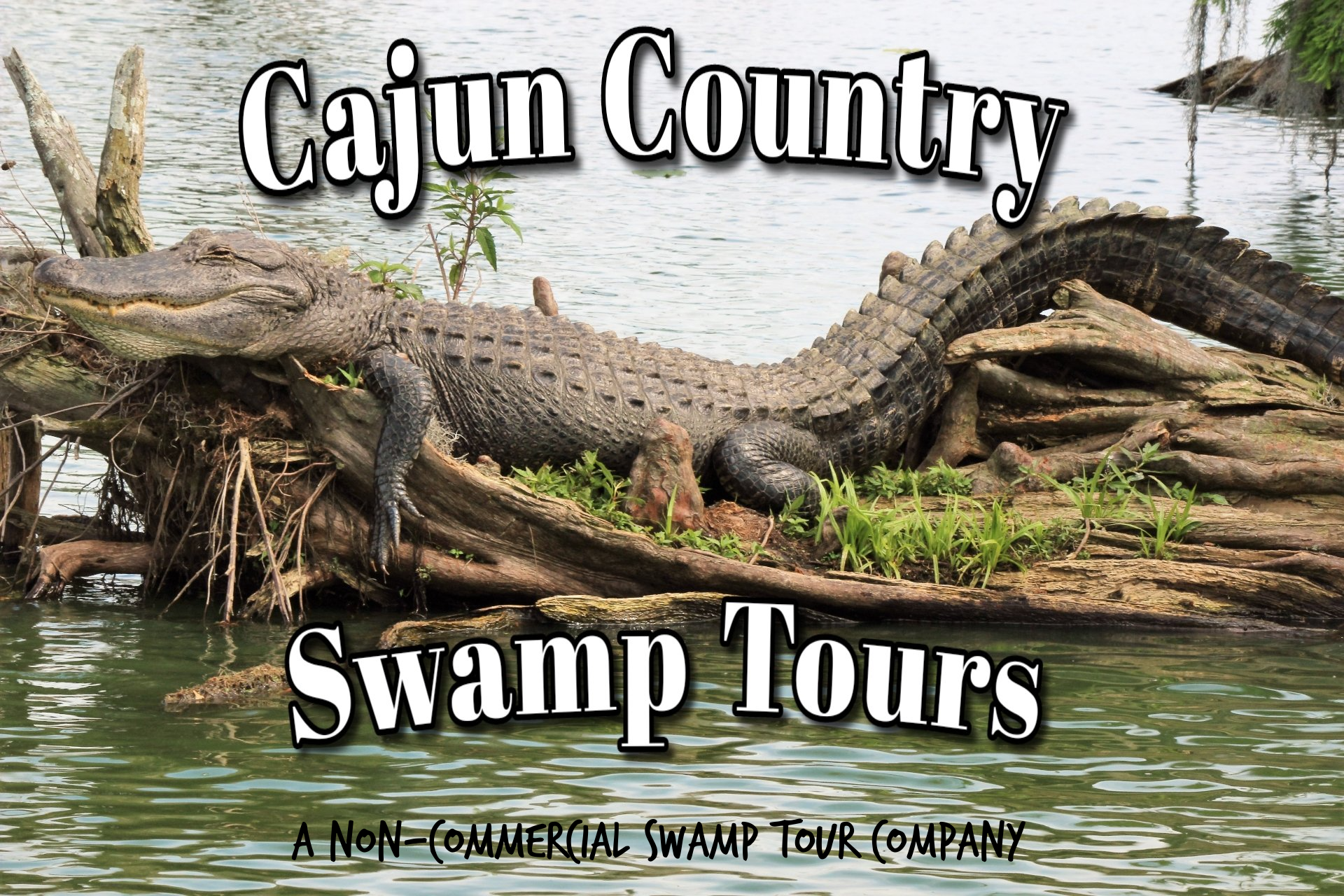Cajun Swamp Tour Introduction
Cajun Country swamp tour boats are all authentic Cajun crawfishing skiffs, which are a type of open swamp boat developed to navigate through the harsh conditions of backwater swamps. This tour boat is small enough to get deep in the backwater yet stable enough to carry boat loads of fish, alligators, crawfish etc. to market. The swamp tour boat is powered by a very quiet environmentally friendly 4-stroke outboard motor. There are 3 boats with 2 different sizes. One seats 10-12 and the other two, seats 18-20 and can accommodate large adults comfortably.


During the swamp tour we make a visit to a spectacular wading bird rookery (Feb.-July) that is second to none. Thousands of pairs of wading birds will make Lake Martin Swamp their home during the long nesting season (Feb.-August) and are sure to give you an unforgettable experience of the richness of life that a backwater swamp provides. As you watch birds trade back and forth tending to nest and young I will share with you some secrets of mother nature’s hand and the interrelationships of the ecology of a wading bird rookery. Scattered about the rookery and just as intent on the workings of the rookery are the ever present Alligators- what strange bed partners they make with the birds; you will be surprised at the rest of the story.
This swamp rookery has roseate spoonbills, white ibis, cattle egrets, great egrets, snowy egrets, great blue herons, anhingas, fish crows, cormorants, black-crowned night herons, little blue herons, common moorhens, wood ducks, barred owls, red shouldered hawks, prothonotary warblers, and Carolina chickadees. Many other species nest here also. Lake Martin’s bird rookery has been noted as one of the best bird watching areas in the US.
As your swamp tour continues through the Lake Martin Swamp you will view its beautiful clear water lake surrounded by ancient cypress trees adorned with garlands of Spanish moss. How this natural lake was formed, legends, swamp folk occupations and more of nature’s secrets will be revealed to you as your swamp tour travels toward a part of the swamp that escaped the lumber barons of the early 1900’s. Here you will see majestic centuries old cypress trees encircled by tall cypress knees and a bayou that once fed and drained the swamp
Along the way we will encounter a variety of wildlife in natural surroundings going about their daily lives. Alligators sunning themselves in the spring , fall and winter or alligators swimming about during the summer with just their eyes and nose visible. April and May is the mating season for alligators and bulls are heard and seen calling during this time of year. From July to mid September female alligators are building nests, laying eggs, and standing guard over nests and young. Herons, egrets, anhingas, cormorants, roseate spoonbills will be encountered as they hunt the shallows for food. We may see turtles, spiders, song birds, woodpeckers, owls, kites, raccoons, osprey, and other swamp animals as we meander through the moss draped cypress swamps of south Louisiana. We may find a Great Blue Heron catching a fish, or a Black-crowned Night Heron with a bullfrog or snake in it’s mouth and you will wonder how on earth can that small heron swallow a large bullfrog or two foot snake. We may see small young gators in shallow water areas away from the grown up gators who will eat them if given the chance. These little gators are eating anything they can get, frogs, dragonflies, snakes, turtles, to name a few of their menu items.
Please keep in mind that Cypress Island/Lake Martin Swamp is a primitive area and not a theme park. Each day is unique, controlled only by the weather, the seasons, and of course MOTHER NATURE. As we are observing mother nature at work I will explain some of the dynamics that have built Cajun country for the past 15,000 years. How the bayous and Mississippi River worked together to build up acadiana and how this relates to the different climate vegetative groups we encounter. I will also explain how everything in the swamp is influenced by the seasonal water fluctuations, what causes pecky cypress, why some cypress is more durable than others, why there are no mosquitos in Lake Martin Swamp, why and which herons are named whistling chickens and summer ducks by the local inhabitants and other aspects common to south Louisiana Cajun culture and swamps.
